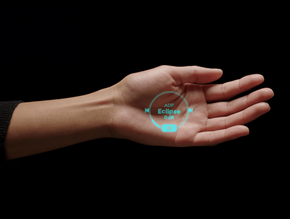Artificial intelligence helps hospitals as winter is coming

Researchers in Scotland say artificial intelligence may be able to ease winter pressures on hospitals by diagnosing lung diseases without the need for lengthy and expensive combinations of traditional diagnostic tests.
University of the West of Scotland researchers have used an AI-based technology originally created to detect Covid-19 from X-ray images to help identify a range of different lung diseases in a matter of minutes, with around 98 per cent accuracy, they say.
Tuberculosis and pneumonia – potentially serious infections which mainly affect the lungs – often require CT scans, blood tests, X-rays, or ultrasounds, tests that can sometimes involve lengthy waiting times for results.
It is hoped the technology could be used to take pressure from hospital departments by creating efficiencies, reducing waiting times and providing fast, accurate disease detection, which in turn frees up radiographers for additional work.
Automated AI diagnosis helps free up valuable staff time
“Systems such as this could prove to be crucial for busy medical teams worldwide,” says UWS researcher Professor Naeem Ramzan, Director of the Affective and Human Computing for SMART Environments Research Centre at UWS, who led the development of the technology, along with UWS PhD students Gabriel Okolo and Dr Stamos Katsigiannis.
“There is no doubt that hospital departments across the globe are under pressure and the outbreak of Covid-19 exacerbated this, adding further strain to pressured departments and staff,” he says. “There is a real need for technology that can help ease some of these pressures and detect various diseases quickly and accurately, helping free up valuable staff time.
“X-ray imaging is a relatively cheap and accessible diagnostic tool that already assists in the diagnosis of various conditions, including pneumonia, tuberculosis and Covid-19. Recent advances in AI have made automated diagnosis using chest X-ray scans a very real prospect in medical settings.”
The new technique utilises X-ray technology, comparing scans to a database of thousands of images from patients with pneumonia, tuberculosis and covid. It then uses an algorithm typically used to analyse visual imagery to arrive at a diagnosis.
“Hospitals around the world are under sustained stress,” says Professor Milan Radosavljevic, UWS’s Vice-Principal of Research, Innovation and Engagement. “This can be seen throughout the UK, as our fantastic NHS continues to undergo immense pressure, with hard-pressed medical staff bearing the brunt.”
Researchers at UWS are now exploring the technology's suitability in detecting other diseases using X-ray images, such as cancer.
- IBM & Oxford University discover AI antiviral for COVID-19AI Strategy
- “Augmented workforce” still finding its feet in shift to AIAI Strategy
- Machine learning hashes out a way to speed up huge databasesMachine Learning
- Scientists reflect on the Harry Potter nature of AI chatbotsAI Applications






